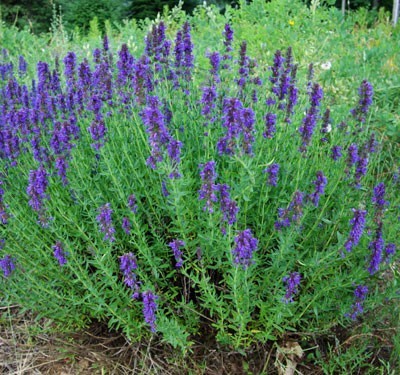
Common Name: Jufa
English Name: Hyssop
Botanical Name: Hyssopus officinalis Linn.
Family: Labiatae
Description: It is an evergreen, bushy herb, growing 1 to 2 feet high, with square stem, linear leaves and flowers in whorls, six- to fifteen-flowered. Hyssop herb is a member of the mint family. Hyssop is a hardy and a low-growing perennial to a height of about 60cm.Hyssop grows with many stalks, square at first, but becoming round as they come to flower. The leaves are small, shiny and dark green in colour with no stalks. The flowers grow in long spikes usually with good fragrance. The flowers are aromatic royal blue, white or pink in colour.They blooming time is during the month of late summer or early spring. They attract bees and butterflies and reseeds vigorously. They grow in moist and well-drained soil.
Chemical Constituents: Several chemical constituents of hyssop have been identified, including pinocamphone, pinene, borneol, geraniol, thujone, camphene, limonene and phellandrene. Terpenoids with known pharmacological actions that are found in hyssop include marrubiin, ursolic acid and oleanolic acid. Other characteristic compounds identified in hyssop are hyssopin (a glucoside), caffeic acid, tannins and resin. The volatile oil of hyssop is composed of camphor, pinacaphone, thujone, isopinocamphone, alpha- and beta-pinene, alpha terpinene, linalool, and bornylacetate.
Description: Jufa is a good expectorant commonly used to treat respiratory conditions such as influenza,sinus infections, colds, and bronchitis. Most of its medicinal properties are attributed to the essential oil of hyssop. Hyysop can also be used externally to treat burns and bruises and can be used to calm anxiety. The herbs bitter principle, marrubin, also contributes to its use as a digestive stimulant.
Used in the following MATXIN products: